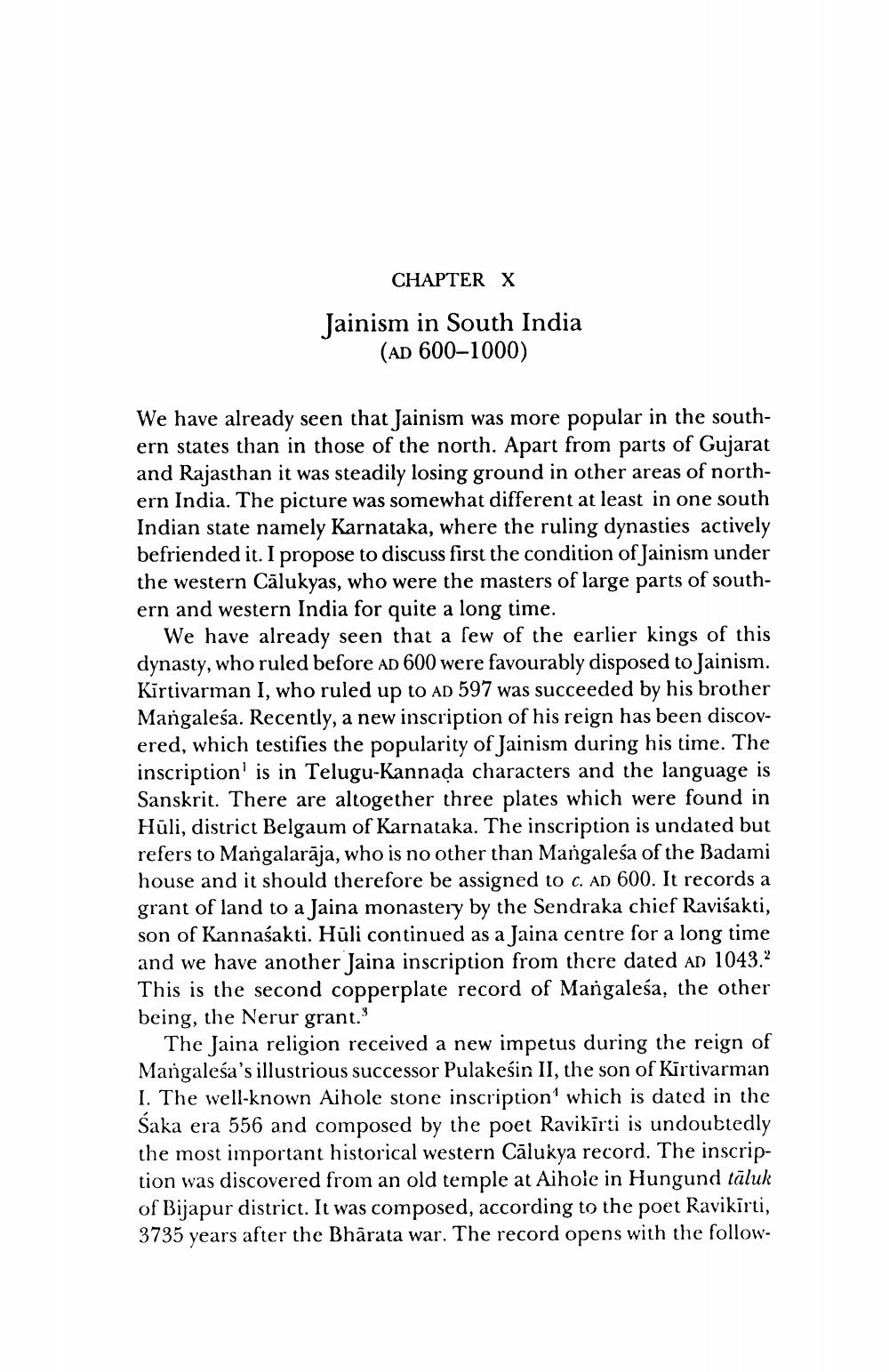________________
CHAPTER X
Jainism in South India (AD 600-1000)
We have already seen that Jainism was more popular in the southern states than in those of the north. Apart from parts of Gujarat and Rajasthan it was steadily losing ground in other areas of northern India. The picture was somewhat different at least in one south Indian state namely Karnataka, where the ruling dynasties actively befriended it. I propose to discuss first the condition of Jainism under the western Călukyas, who were the masters of large parts of southern and western India for quite a long time.
We have already seen that a few of the earlier kings of this dynasty, who ruled before AD 600 were favourably disposed to Jainism. Kirtivarman I, who ruled up to AD 597 was succeeded by his brother Mangalesa. Recently, a new inscription of his reign has been discovered, which testifies the popularity of Jainism during his time. The inscription is in Telugu-Kannada characters and the language is Sanskrit. There are altogether three plates which were found in Hüli, district Belgaum of Karnataka. The inscription is undated but refers to Mangalaraja, who is no other than Mangaleśa of the Badami house and it should therefore be assigned to C. AD 600. It records a grant of land to a Jaina monastery by the Sendraka chief Raviśakti, son of Kannasakti. Huli continued as a Jaina centre for a long time and we have another Jaina inscription from there dated AD 1043.2 This is the second copperplate record of Mangalesa, the other being, the Nerur grant."
The Jaina religion received a new impetus during the reign of Mangalesa's illustrious successor Pulakesin II, the son of Kirtivarman I. The well-known Aihole stone inscription' which is dated in the Śaka era 556 and composed by the poet Ravikīrti is undoubtedly the most important historical western Cālukya record. The inscription was discovered from an old temple at Aihole in Hungund tāluk of Bijapur district. It was composed, according to the poet Ravikīrti, 3735 years after the Bharata war. The record opens with the follow




